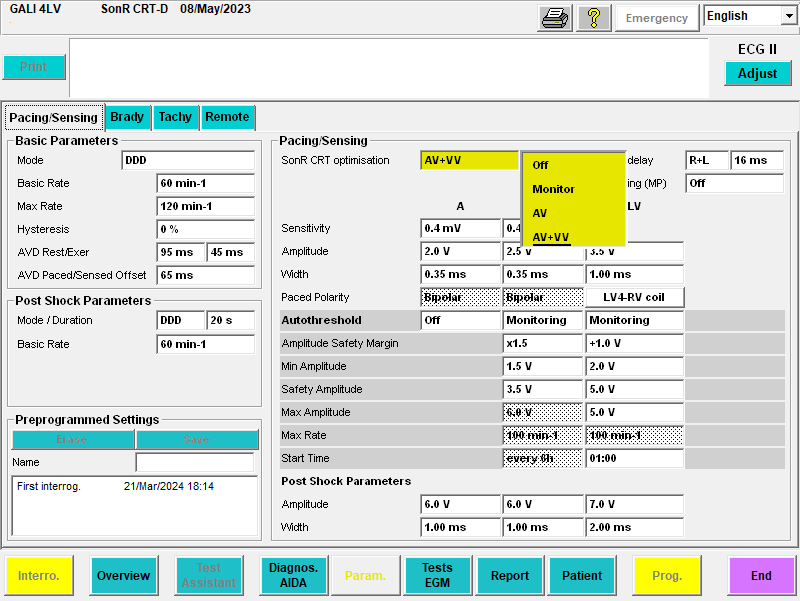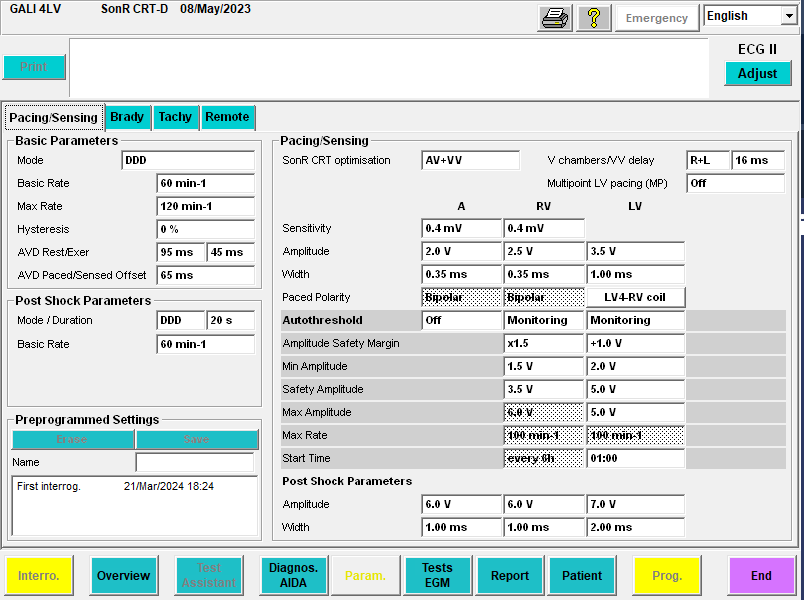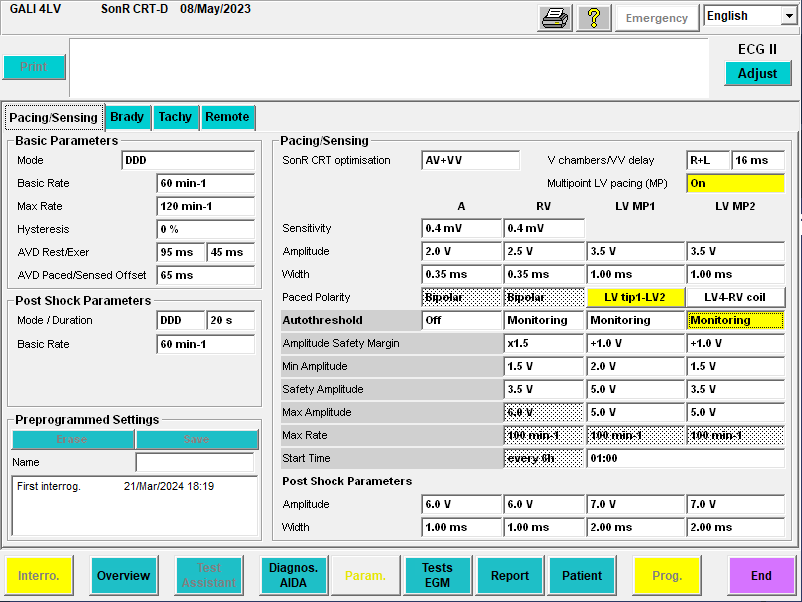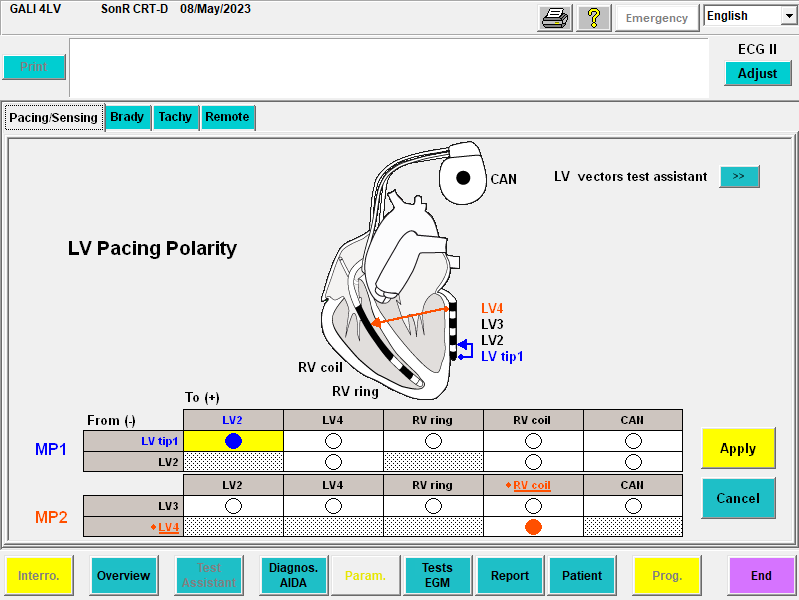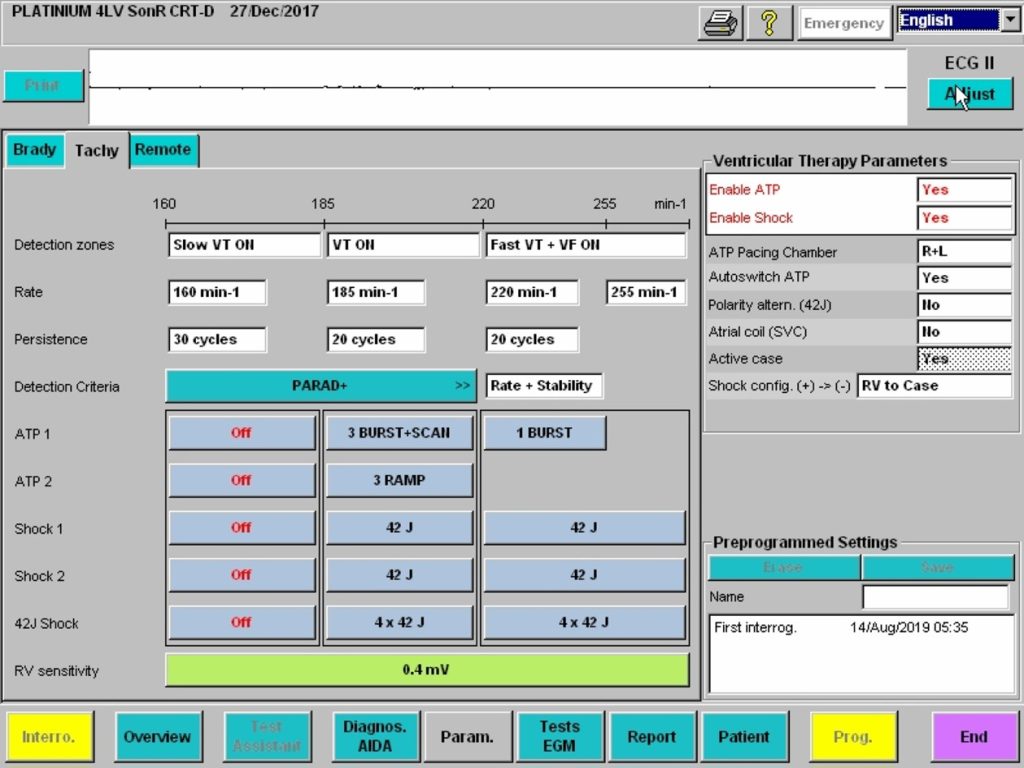Programming the LV lead
The « Param. » button in the function bar at the bottom of the programmer screen allows access to the programming parameters for bradycardia, tachycardia and remote monitoring. The first screen to appear is the antibradycardia pacing parameters, most of which are described in the corresponding pacemaker courses. We will discuss the pacing parameters specific to CRT.
« SonR CRT Optimisation » tab
Under the « SonR » section, we find the « SonR CRT optimisation » parameter with 4 possible options: « Off », « Monitor » for which the algorithm processes the data and proposes optimal values, « AV » which automatically reprograms the AV delays, and « AV + VV » which automatically reprograms the AV delays and VV intervals. Find more about SonR in the AV/VV optimization course.
« V Chambers/VV delay » tab
Under the « Pacing/Sensing » section, we find the « V Chambers/VV Delay » parameter. It allows choosing monoRV (« R »), monoLV (« L »), biV ( «R + L » or « L + R » pacing, defining the order of occurrence of ventricular pacing spikes if a VV interval differing from 0 is applied). The VV delay is chosen between 0 and 64 ms in incremental steps of 8 ms.
« Multipoint LV pacing (MP) » Tab
The « Multipoint LV pacing (MP) » parameter can be used if a quadripolar left ventricular lead is implanted. « Off » means that only one electrode is used as a cathode on the LV lead, i.e. the left ventricle is paced only at one site. « On » means that two LV electrodes are used as cathodes on the LV lead, enabling the left ventricule to be paced at 2 separate sites. When a quadripolar lead is implanted, 14 pacing vectors are available for the pacing polarity.
Between 2010 – 2020 there were many studies investigating the potential beneficial effects of MP pacing but results were controversial. The idea is that adding a second area of LV capture, the LV is activated faster, optimizing CRT. While technically true, the beneficial effects on LV pump function are highly controversial. In addition, multipoint pacing more than doubles LV pacing output, draining the battery faster. Current ESC guidelines on pacing and CRT do not recommend MP pacing.
When clicking « On » in the « Multipoint LV pacing (MP) » tab, two LV lead electrodes are hence used as cathodes on the LV lead, with the respective LV pacing polarities, amplitude and pacing width for each of the LV pacing dipoles « MP1 » and « MP2 » appearing on the screen.
Clicking on any of the « LV pacing polarity » tabs opens a new screen allowing the selection of the LV pacing electrodes, aided by a diagram. If you wish to program, clicking on « Apply » returns to the pacing parameters screen allowing the programming of the selection made.
Tachy tab
Under the tachy tab, the ICD parameters may be programmed, these are discussed in the ICD courses. In CRT devices, it is possible to choose the ventricular pacing configuration for ATPs, which is independent of pacing: « R » for RV, « L » for LV, « R+L » for biV. The VV delay is forced to 0 ms during a biV ATP. It is recommended to keep this setting on “R+L” as literature indicates it is more effective. If you wish to know more about ATP, we highly recommend this video by Dr Josh Cooper.


